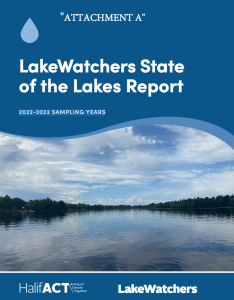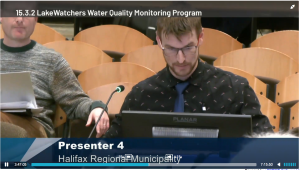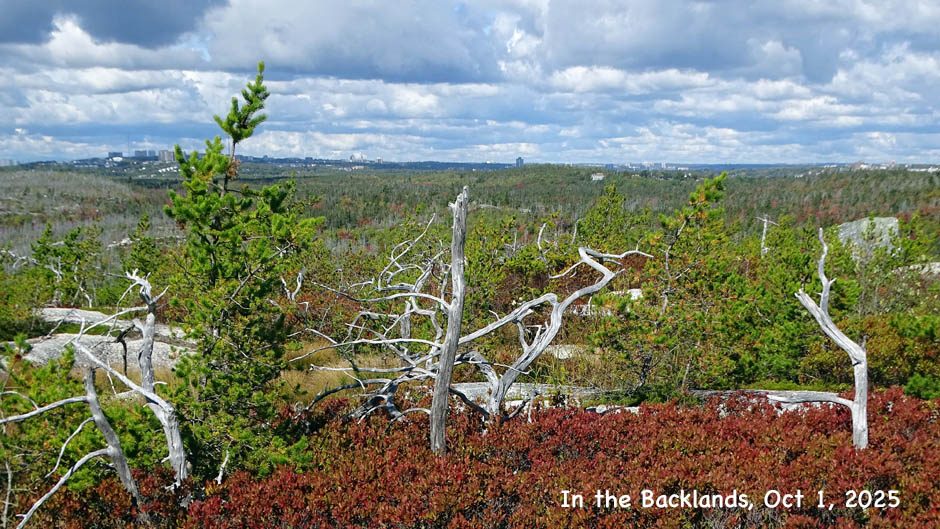 View Item No. 15.3.2, Halifax Regional Council November 12, 2024
View Item No. 15.3.2, Halifax Regional Council November 12, 2024
This document includes a Staff Report dated Apr 22, 2024, and the full LakeWatchers State of the Lakes Report, 2022-2023 Sampling Years.
“Environment and Sustainability Standing Committee received a staff recommendation report dated April
22, 2024 to consider an in-depth analysis of the 2022-23 LakeWatchers program, a program initiated to monitor the water quality of 73 lakes in Halifax Regional Municipality (HRM).
“The Environment and Sustainability Standing Committee recommends that Halifax Regional Council:
1. Direct the Chief Administrative Officer to initiate a review of the Municipality’s current Salt Management Plan guided by the Syntheses of Best Practices Road Salt Management.
2. Direct the Chief Administrative Officer to investigate policy options for setbacks for new stormwater discharge locations into natural waterbodies and consider options for naturalization and/or Low Impact Development (LID) features at existing stormwater discharge locations around priority lakes.
3. Request that the Mayor write a letter to the Province of Nova Scotia’s Minster of Environment and Climate Change and the Halifax Regional Water Commission, supporting and encouraging the timely development of provincial stormwater quality standards”
 The video recording begins with a presentation by Chris Kennedy, Coordinator of the LakeWatchers Program.
The video recording begins with a presentation by Chris Kennedy, Coordinator of the LakeWatchers Program.
The Motion with the recommendations above passed 17:0 (4:51:00).
For reference:
Executive Summary of the LakeWatchers State of the Lakes Report, 2022-2023 Sampling Years
EXECUTIVE SUMMARY
The “State of the Lakes” Report (Attachment A) provides an in-depth analysis of the 2022-23 LakeWatchers program, which was initiated to monitor the water quality of 73 lakes in the Halifax Regional Municipality (HRM). The report outlines the key findings of the LakeWatchers Program related to the current baseline conditions of the lakes, focusing on eutrophication, chloride enrichment, and bacterial contamination.The LakeWatchers Program actively engages and involves community groups and volunteers in water quality monitoring, setting it apart from a previous municipal water quality monitoring program (2006-2011) which relied solely on consultants. The LakeWatchers program was launched in the spring of 2022. The number of lakes in which community groups and volunteers have participated has grown to include 30 of 73 lakes as of August 2023.
While the 2022-23 LakeWatchers data detected lower phosphorus levels compared to the 2006-2011 HRM Lake Water Quality Monitoring Program (LWQMP), further analysis of other parameters maintains that Halifax-area lakes are experiencing a rise in nutrient levels over time. These results were consistent between both lakes sampled by volunteers and consultants. Duplicate samples will be collected in 2024 to further investigate.
Additionally, most lakes displayed consistently elevated deepwater chloride levels, with some in exceedance of federal guidelines for long-term exposure intended to protect freshwater aquatic life. These elevated chloride levels pose a significant threat to the biodiversity of freshwater ecosystems within the HRM and have the potential to disrupt the natural mixing cycle of lakes.
Lastly, there were very few (<1%) instances of E. coli detected above Health Canada guidelines which suggests that E. coli is not a lake wide concern and instead impacts near-shore beaches.
Overall, the initial findings of the LakeWatchers Program indicate that most Halifax-area lakes currently suffer from some level of chloride enrichment and show signs of increasing eutrophication. These findings align with previous studies and emphasize the importance of monitoring to inform proactive measures to protect lake water quality in the municipality.
– From Item No. 13.1.2, Environment & Sustainability Standing Committee October 03, 2024: Subject: LakeWatchers Water Quality Monitoring Program Report 2022-2023.
Also view:
Halifax LakeWatchers
Website for the Halifax LakeWatchers program, initiated in 2022.
Lakes monitored under this program that are in the Backlands or that are in headwaters of the McIntosh Run (Powers Pond) Watershed:
– Williams Lake (Williams Lake Watershed)
– Bayers Lake McIntoshRun Watershed)
– Long Lake (McIntoshRun Watershed)
– Kidston Lake McIntoshRun Watershed)
